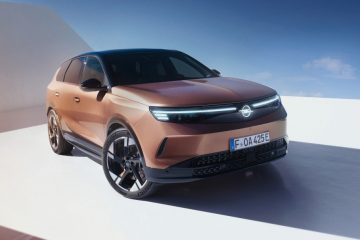 The ŠKODA Yeti has been making deep footprints in the market since its debut in 2009 and in doing so has added strength and breadth to ŠKODA’s model portfolio. In the first full year of production alone, it was purchased by 52,604 customers. While it represents the likeable, unaggressive side of the young compact SUV segment, the Yeti is also equipped to tackle the sort of tough conditions that leave others floundering. Thanks to its generous ground clearance, it is able to cope with difficult terrain, yet on the road it dazzles with its dynamics which more than equal those of conventional family cars. On top of all this, it offers maximum protection to passengers, other drivers and pedestrians. As such, the Yeti achieved the best possible rating in its Euro NCAP crash tests, earning a full five stars.
The ŠKODA Yeti has been making deep footprints in the market since its debut in 2009 and in doing so has added strength and breadth to ŠKODA’s model portfolio. In the first full year of production alone, it was purchased by 52,604 customers. While it represents the likeable, unaggressive side of the young compact SUV segment, the Yeti is also equipped to tackle the sort of tough conditions that leave others floundering. Thanks to its generous ground clearance, it is able to cope with difficult terrain, yet on the road it dazzles with its dynamics which more than equal those of conventional family cars. On top of all this, it offers maximum protection to passengers, other drivers and pedestrians. As such, the Yeti achieved the best possible rating in its Euro NCAP crash tests, earning a full five stars.
The environmentally-friendly GreenLine version of the Yeti, with a 1.6 TDI CR DPF/77 kW (105 bhp) engine, shows that no ultra-modern approaches are necessary to create an economical and ecological SUV. In conjunction with the Start-Stop system, brake energy regeneration, low rolling resistance tyres and gear change indicator, the Yeti GreenLine achieves extremely low consumption of 4.6 l/100 km and CO2 emissions of 119 g/km. The front-wheel drive has a five-speed manual transmission.
More comfort, greater appeal: the 2012 model year
Entering the new model year, the Yeti will receive numerous visual enhancements based on the colour and design packages. For the first time, two-tone colouring – as seen in the Fabia – will be available. Customers can choose between four different shades of roof, feeding the Yeti’s personality and making striking contrasts. There are also two new metallic colours, Malachite Green and Lava Blue, which give the compact SUV’s body a particularly elegant touch. Design package Reef, which can be ordered for the Ambition and Experience trim levels, includes protective side mouldings, two-tone 17-inch alloy wheels and silver roof rails. The visual innovations are rounded off by the new 16-inch Nevis alloy wheels.
Comfort and functionality can also be enhanced by the new optional folding tables fitted to the back of the front seats. They will be appreciated by passengers of all ages and interests and can be used for play and work. The front passenger seat can be folded forwards completely, adding even more variation to the interior. This dramatically improves the ability to transport long objects, and in other cases it can serve as a convenient tabletop.
From the 2012 model year, the upgraded Amundsen+ navigation system with factory-installed maps will be available for the Yeti. Customers will be able to take their pick of two versions of maps: Eastern and Central Europe or Western and Central Europe. Destinations can be entered using a postcode of up to seven digits (the coding used by several European countries). The navigation device also features a CD player and radio, which can optionally be complemented with digital DAB radio reception and a Bluetooth module for handsfree phoning while driving.
On freezing winter days, the Yeti’s optional independent heating remote control is sure to come in handy, enabling the driver to start heating the interior at the breakfast table so that the car is just the right temperature when it’s time to leave. When parking in narrow streets or when driving through narrow openings, the convenient electric folding door mirrors can be activated.
Outside compact, inside spacious: the Yeti’s perfect silhouette
The Yeti is delivered exclusively as a five-door vehicle, its wide-opening side doors making entry to the passenger compartment especially easy, while the high-rising tailgate facilitates access to the luggage compartment. Intelligent power-distributing four-wheel drive and ground clearance of 180 millimetres make the Yeti perfectly suited to off-roading.
The Yeti’s overall length of 4,223 millimetres allows it to be parallel parked in the tightest of spots, while its width of 1,793 millimetres guarantees that the doors can be opened wide even in narrow parking spaces. Its height of 1,691 millimetres, kerb weight (including a 75 kg driver) of 1,345 kilograms (1.2 TSI FWD) and a payload of 545 kilograms allow virtually limitless use of the Yeti’s flexible boot volume of between 416 litres and 1,760 litres. The maximum trailer weight of 2,000 kilograms makes the Yeti a safe and hardworking towing vehicle for all types of trailers.
What you see: design
The Yeti’s strength of character is clearly portrayed by the contours of its body. Its typical off-road design components imply a vehicle able to cope with rough terrain, while wheel sizes up to 17” provide excellent road performance. The Yeti combines classic hallmarks of SUVs and off-road vehicles, such as high-set headlamps, flared wheel arches and wings and lower body protective panels, while quite obviously remaining a ŠKODA, thanks to its distinctive radiator grille with the chrome upper rim. The C-pillars concealed under black painted covers and roof rails (delivered as standard) add to the functional design of this compact SUV.
The rear is designed along the same functional lines. The flat, vertical tailgate opens easily and far enough so that even tall users have no problem standing underneath. The tailgate window and black cladding of the D- and C-pillars encourages the impression of a continuous window surface stretching all the way to the B-pillar. This theme is replicated at the front, where the blacked-out A-pillars recreate the “visor” aesthetic that has become an established feature of ŠKODA’s compact cars. The front and rear skid plates underline the Yeti’s off-road suitability, while separate circular fog lamps enhance the front view.
Versatile and attractive: the interior
Intelligent packaging – the configuration of the passenger compartment and the arrangement of its components – has resulted in very generous passenger space for the Yeti’s overall height of 1,691 mm and wheelbase of 2,578 mm. It offers a supremely comfortable travelling environment, perfect for the longest of journeys. The quest for high quality is clearly visible in the careful selection of materials to emphasize the relaxing atmosphere inside. Easy-to-use switches and buttons, and upholstery and trim that flatter the senses at every touch, are just some of the qualities placing the Yeti at the top of its class. Shapes and colours are carefully matched and the controls have been designed to fit in with the rest of the ŠKODA family, to which this compact SUV openly and proudly belongs.
The front seats have a long, supportive base with good side support for effortless driving comfort. The Experience trim includes driver’s lumbar support as standard and electric seat adjustment as an option. The steering wheel is height- and reach-adjustable so, however tall or small the driver, everyone can find a comfortable and, above all, safe place at the controls of a Yeti. The raised seat height enhances visibility and gives the driver a clear view of the situation on the road. It also makes getting in and out extremely easy. Rear seat passengers sit two centimetres higher than their front seat fellow travellers, which creates a “platform effect” similar to that found a cinema, providing an excellent view ahead. Rear seat flexibility and comfort are increased by the VarioFlex seat concept, adapted from the Roomster. Thanks to VarioFlex, the Yeti achieves an interior versatility so far unmatched in its category. The three separate rear seats can be individually folded or removed; the outer seats can slide forwards and backwards and – with the middle seat removed – sideways by 80 millimetres. This converts the Yeti from a five- to a four-seater, which is compensated by extra room in the back associated with a higher class of vehicle. From the 2011 model year, sporty front seats with bolder shaping of the sides will be available to provide better support to the body during cornering. The middle part of the cushions and backrests are also offered in silver or red, further increasing the attractiveness of the interior.
With all the rear seats removed, the Yeti’s boot can hold up to 1,760 litres. Standard equipment includes a luggage compartment cover, load lashing rings, foldable hooks and luggage nets. In the Active trim, which uses an emergency puncture repair kit instead of a spare wheel, the netting package is available as an option. The luggage compartment fastening system with moveable hooks saves time when loading and prevents luggage from moving around when driving.
Something for everyone: engines
The Yeti’s engine range includes six four-cylinder units delivering power from 77 kW (105 bhp) to 125 kW (170 bhp), comprising three petrol and three diesel engines, all of which meet EU 5 emission requirements.
The entry-level engine is the 1.2 TSI petrol engine, which delivers 77 kW (105 bhp) and torque of 175 Nm between 1,550 and 4,100 rpm. Customers can opt for a manual six-speed gearbox or the innovative seven-speed automatic DSG.
In July, another petrol engine was introduced: the 1.4 TSI, delivering 90 kW and peak torque of 200 Nm between 1,500 and 4,000 rpm, which is transferred to the front wheels by a manual six-speed gearbox.
The Yeti’s third petrol engine is the muscular four-cylinder 1.8 TSI 118 kW (160 bhp). It reaches its torque peak of 250 Nm at very low revs, with full pulling power available from 1,500 rpm to 4,500 rpm. Combined fuel consumption with four-wheel drive averages 8.0 litres per 100 kilometres, with CO2 emissions of 189 g/km. This reduced consumption is due to measures such as a two-stage oil pump which works with a pressure of 1.8 bar up to 3,500 rpm and, above that (when more oil is required for lubrication), 3.3 bar. An additional, second lambda sensor delivers improved exhaust quality as the injection sequences and quantities can be controlled more precisely.
The 2.0 TDI engine is available in three versions offering different levels of power, all with direct common-rail injection and a diesel particulate filter as standard. The basic version is the 81 kW (110 bhp) engine, followed by the 103 kW (140 bhp) unit. Maximum torque of 250 Nm (280 Nm for FWD) and 320 Nm, respectively, is provided from 1,500 to 2,500 rpm (1,750 to 2,750 for FWD) and 1,750 to 2,500 rpm, respectively. Combined consumption for the 2.0 TDI 103 kW engine – with permanent four-wheel drive as standard – is 6.1 litres diesel per 100 kilometres, which equates to CO2 emissions of 157 g/km. The most powerful of the diesel trio is the four-cylinder 125 kW (170 bhp) engine with impressive torque output of 350 Nm, reached between 1,750 and 2,500 rpm. Exhaust gas recirculation, which – depending on engine speed and load – returns up to 60% of the burnt mixture to the intake air and a catalytic converter guarantee low toxic exhaust gas values. All four-wheel drive engine versions are supplied with a six-speed manual gearbox; only vehicles with the 2.0 TDI CR DPF/81 kW engine and front-wheel drive are paired with a manual five-speed gearbox. As of June 2010, the 2.0 TDI CR DPF/103 kW engine has also been available with a six-speed DSG.
Yeti engine range:
Petrol engines:
1.2 TSI 77 kW (front-wheel drive) – 6-speed manual gearbox / 7-speed DSG
1.4 TSI/90 kW (front-wheel drive) – 6-speed manual gearbox
1.8 TSI/118 kW (four-wheel drive) – 6-speed manual gearbox
Diesel engines:
1.6 TDI CR DPF/77 kW (front-wheel drive) – 5-speed manual gearbox (GreenLine)
2.0 TDI CR DPF/81 kW (front-wheel drive) – 5-speed manual gearbox
2.0 TDI CR DPF/81 kW (four-wheel drive) – 6-speed manual gearbox
2.0 TDI CR DPF/103 kW (four-wheel drive) – 6-speed manual gearbox / 6-speed DSG
2.0 TDI CR DPF/125 kW (four-wheel drive) – 6-speed manual gearbox
Refined: chassis
The Yeti is distinguished by agile and, above all, safe driving characteristics. The classic front axle design and a multi-link rear axle with sound stability keep the driver and passengers safe and supremely comfortable.
The Yeti’s chassis uses construction modules that can also be found in the Octavia and the Octavia Scout. The Yeti’s front axle features McPherson suspension, combining struts and lower triangular transversal links. The multi-link rear axle is a modified version of that used in the Octavia. Its track is 30 mm wider, which befits an off-roader and, in connection with a 23 mm diameter torsion stabilizer on the front axle, reduces body roll in cornering. This configuration is identical on both front-wheel drive and permanent four-wheel drive versions of the Yeti. The rear axle is mounted on a subframe which is connected to the body via four flexible mountings designed to attenuate vibrations and noise. The FWD Yeti’s fuel tank holds 60 litres of fuel (the front-wheel drive 55 litres), which offers excellent range between refuelling.
The basic 16-inch wheels and 215/60 R16 tyres, delivered as standard, provide perfect off-road running and reassuring suspension. Seventeen-inch alloy wheels and 225/50 R17 tyres are also available.
Thanks to ground clearance of 180 mm and the four-wheel drive system incorporating a fourth-generation Haldex clutch, the ŠKODA Yeti meets all the normal requirements of drivers who want to venture off the beaten track. The Yeti’s four-wheel drive system is based on the same technology introduced in the Octavia Combi 4×4 and the Superb 4×4, with an electro-hydraulically controlled Haldex multi-disc clutch located in the same housing as the final drive and the rear axle differential. Under good traction conditions, such as on dry roads, 96% of the engine’s torque is delivered to the front wheels. However, depending on specific conditions, the Haldex clutch can divert up to 90% of the torque to the rear axle. The electronic differential lock prevents the slipping of any of the wheels with lower traction on either axle. This ensures the Yeti’s excellent grip and manoeuvrability both off road and on slippery asphalt surfaces.
When connecting with the rear axle, the Haldex control unit receives a lot of data from various sensors, such as:
· the engine control unit (engine revs and the accelerator pedal position),
· the ABS/ESP control unit (wheel speed, brake light switch, lateral and longitudinal acceleration),
· the steering wheel angle.
The intelligent four-wheel drive mode is fully compatible with all of the Yeti’s electronic driving stability systems. When the ESP system (standard in the four-wheel drive versions and Experience trim) is engaged, the ABS/ESP control unit takes over the Haldex clutch control. When the ABS system is activated, the Haldex clutch is automatically decoupled.
When driving the Yeti 4×4 on unpaved surfaces, changing the settings of its various electronic systems couldn’t be easier. A simple press of the dashboard-mounted Off-Road button switches all assistance systems to a special off-road setting. Once engaged, the accelerator responds more sensitively when pulling away on loose surfaces, while the Auto Hold feature helps the vehicle out in tricky situations. The hill descent control uses sensitive braking to maintain a constant speed descending steep slopes, regardless of whether the vehicle is in any of the gears from one to three, reverse, or neutral. With one less worry, the driver can concentrate on picking out the best path to follow in challenging terrain.
Under a protective wing: safety
One of the top priorities throughout the design and development of the Yeti was to combine outstanding SUV characteristics with the strongest points of conventional passenger cars, especially safety and security. Despite its comparatively low kerb weight, the Yeti is a robust car engineered to withstand all crash tests. It can protect its occupants and offer a wide margin of safety to pedestrians. The body was designed with a view to achieving the full 5-star rating in tests performed by the independent Euro-NCAP organization, a mission accomplished with ease. The Yeti also meets various safety standards in the other markets where it is to be introduced in the future. Thanks to the use of high strength steel, which channels impact energy away from critical areas in a controlled manner, the Yeti does not place any unnecessary risk on passengers in the event of an accident. All Yeti models are equipped with ABS, including Mechanical Brake Assist (MBA), and Engine Torque Control (MSR) as standard. ESP is included in all four-wheel drive versions and in the Experience trim. Up to nine airbags, including a driver knee airbag and rear side air cushions, protect passengers in the event of an accident.
If any of the airbags are deployed, a whole series of emergency safety measures is activated. The fuel and power supply to the engine is automatically cut, reducing the risk of fire, while the central locking system opens the door locks and the interior light is turned on to facilitate access and any necessary intervention by rescuers at night.
In the event of a rear-end collision, the WOKS active front head restraints protect the driver and front passenger from injuries. Properly formed head restraints help prevent whiplash injuries. In case of emergency braking at speeds of more than 60 km/h, the Yeti’s brake lights automatically flash to warn other drivers of imminent danger. When the car stops, the warning lights start flashing. Isofix anchors for child seats are fitted in the rear, and are available as an option for the front passenger seat, in which case the passenger airbag can be deactivated. This standard feature ranks the Yeti among the safest cars in its class.
An important part of the Yeti’s safety is its perfectly tuned chassis and its four-wheel drive system’s traction. Four-wheel drive guarantees the best possible handling control in any rough conditions, not just on ice and snow. The daytime running lights, delivered as standard, make the Yeti even more visible to other road users.
The Yeti also gives vulnerable road users, such as pedestrians, high levels of protection in a collision. The front of the car has been designed to incorporate crumple zones between the bonnet and the hard components of the engine so that head and chest injuries are minimized in the event of a crash. The standard-fit immobilizer offers basic protection against theft. Other antitheft devices are optional.
Numerous items of equipment guarantee, in combination, a high level of safety. Just a few of them are:
· daytime running lights,
· fog lights with cornering function,
· bi-xenon headlights with curve lighting,
· large indicator lights,
· additional rear bumper reflectors,
· light check (a feature checking that all vehicle lights are working),
· tyre pressure monitoring.
For discerning drivers: standard equipment and extras
In true ŠKODA fashion, the Yeti comes equipped with a generous range of standard equipment. Even the basic Active trim offers a pleasing array of comfort and safety equipment and meets most of the commonest customer demands. The Ambition trim comprises primarily functional details, while the top-of-the-range Experience version adds value with an additional collection of features intended more for comfort and convenience.
The list of optional equipment for the Yeti also offers a wide range of easy-to-use electronic assist systems which, carefully integrated into the Yeti’s internal data network, deliver even more comfort and safety. These include a special “terrain navigation” system in the Columbus GPS to improve off-road orientation. This system is capable of documenting and saving routes off the digitized road network. All four-wheel drive models have ESP and EDS fitted as standard. Front and rear parking sensors and Park Assist can be delivered as on option to make parallel parking in the city that much easier. The Park Assist control unit can execute multiple parking manoeuvres in situations where space is at a premium. All the Yeti needs is a space just 80 cm longer than the car itself.
Climatronic air conditioning with intelligent two-zone control is another helpful feature. It incorporates a sensor that monitors the exterior air quality and guarantees the best possible air quality in the car. If the quality of air drops below a certain level, for example in a tunnel or when stuck in traffic, the air supply is automatically switched to internal circulation until the outside air is clear enough to be used.
The Yeti’s heated windscreen is a guarantee of quick and perfect visibility, particularly in winter months, spot heating the area directly behind where the wipers sit. This prevents the wipers from being activated while they are still frozen to the windscreen and guarantees a perfectly wiped screen New remote control for the optional auxiliary heating significantly increases convenience when switching on or off this increasingly popular piece of equipment.
Other optional equipment includes tyre pressure monitoring, bi-xenon headlights with curve lighting and an electric panoramic sunroof.




